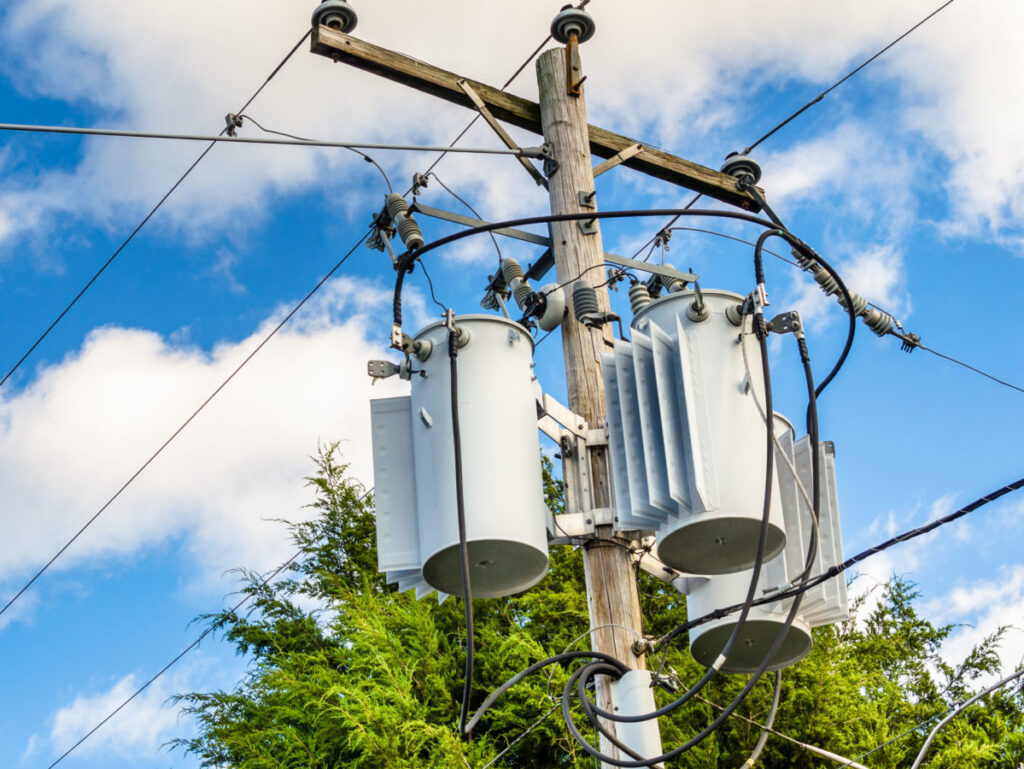PPL and AI: The Journey to ‘Data-Driven’

PPL Electric Utilities recognized early on that data – and the compelling ways it could be put to use – would play a major role in its becoming a “utility of the future” and delivering on its mandate to provide great reliability at a reasonable price.
“We have long championed the idea of using data more strategically to improve service reliability and drive operational efficiency,” said Greg Dudkin, President. “That means getting started with what you have, succeeding or failing fast, and building on what you learn.”
PPL Electric’s data-driven journey reflects this “learn by doing” ethos – and it is paying off handsomely. The company recently brought home the 2019 Investor-Owned Utility of the Year Award from SEPA and experienced its best reliability metrics in company history.
Speed, Focus, Value
While the proverbial journey of 1,000 miles starts with a single step, many electric utilities hesitate to take that step, especially when it comes to data. PPL would have none of it.
Starting with a small internal team of data analysts and enlisting the help of TROVE Predictive Data Science, which added data scientists, data-augmentation expertise, and advanced modeling and AI capabilities, PPL charted a course toward data-driven decision-making one use case at a time.
And while many utilities have become paralyzed by the promise of more real-time data – usually tied to expensive, large-scale IoT/sensor rollouts – PPL knew it already had more than enough data in its systems to fuel progress. The trick would be focusing on use cases that could demonstrate real value and not letting imperfect data be an excuse for not trying.
“Spending time cleaning data is a black hole from which most companies never recover,” said Dudkin. “I knew coming in at PPL that data-driven decision-making was the wave of the future and that our success would hinge on it. That meant get moving with what you’ve got – not going back and trying to clean up everything before taking your first step!”
Added Dave Bonenberger, Vice President, Transmission & Substations, “We started small, worked fast, and didn’t let incomplete data deter us – in fact it helped us get creative and fill in the gaps the best we could as quickly as we could to drive results.”
Moving from Cadence-Based to Risk-Based Maintenance
Two early targets on PPL’s punch list included bringing inherited industry norms – cadence-based maintenance and “peanut-butter spreading” of new capital projects – into the 21st century.
In the first instance, PPL worked to evaluate infrastructure health beyond asset “age” alone, developing new models that also considered historic work-order details and outage information to produce a risk score on individual assets. Assets in PPL’s network, such as substation equipment, could then be prioritized for maintenance, inspection tests, preventative mitigations and replacements based on data-driven risk evaluations, resulting in more efficient and effective use of maintenance dollars.
Building on this initial success, PPL focused on expanding its data-driven approach to informing new capital expenditures, such as the placement of avian guards and lightning arrestors. Enriching its existing data set with detailed bird migration and topographical studies, PPL developed new predictive models that determined 80% of predicted future outages occurred on 8% of feeders.
This enabled PPL to precisely direct placement of protective devices to the lines and poles most at risk, reducing their planned capital expenditures in this area by 75% and reallocating the capital to other high priority investments. No small feat when considering PPL Electric maintains a vast delivery system that spans 10,000 square miles and serves over 3 million people.
And avian-related outages decreased by 70%.
“The avian example speaks volumes about our data-driven approach,” said Dudkin. “This is how we are becoming a better utility, making targeted investments that deliver a significant business benefit.”
Added Bonenberger: “These early successes also proved critical to getting employee buy-in and driving engagement. Our people want to be part of initiatives that build credibility with our many stakeholders, including regulators, legislators, and customers, who want to know their money is being invested prudently.
“And that’s another huge benefit of a data-driven approach: it takes the emotion out of spending decisions, replacing it with facts.”
Transforming Processes: Wood-Pole Failure and Vegetation Management
These quick-win use cases enabled PPL to build the momentum and experience needed to tackle larger process improvements using data, including wood-pole failure and vegetation management. Again, these processes had been dictated primarily by cadence, holding to scheduled inspection programs vs. highly targeted approaches informed by data.
The Human Dimension of AI
“A recurring theme in the AI literature is the replacement of humans, all of them, by machines and data. It’s just not true. Yes, better use of data does drive efficiencies, but in order to operationalize the output, you need people who understand the business processes. Some call these people ‘the missing middle.
“At PPL Electric, we are helping our employees make an important shift. Whereas in years past, someone’s role may have been maintaining equipment, today that person is working with the data analytics team to maintain the algorithm, ensuring it is creating the right inspection and replacement cycle” – Dave Bonenberger, VP, Transmission and Substations, PPL Electric Utilities
And the data abounded: inspection dates, herbicide applications (vegetation management), core samples (wood poles), outage frequency, even inspector names. Leveraging machine-learning AI, the team pored through it all, looking for and finding dependencies that shaped the next model and generated the next risk-based scoring system. The result? A laser focus on replacing high-risk poles and directing vegetation crews to high-problem areas that made each maintenance dollar more productive while netting higher reliability.
Using Data to Aim Higher: “Fix the Northeast”
As PPL racked up wins across discrete asset categories, it gained the confidence and skill to aim higher. Could a data-driven approach that effectively risk-scored each part of its network also be taken to look across silos and deliver a more-informed portfolio view of risk?
Pulling from the utility’s own data sources and augmenting them with additional vegetation, weather, topographical, and avian data, PPL fleshed out more than 400 feeder attributes to qualify each historical outage in its most prone network geography, the Northeast. It then trained new predictive models on this enhanced data set to determine which attributes or combination of attributes were indicators of potential future outages.
This approach enabled PPL to search beyond reliability KPIs, such as “customer minute interruptions” (CMI), to identify management actions for improving reliability. Using data science to evaluate its reliability performance at a finer resolution, PPL quantified the reliability of its entire distribution network – honing in on specific mechanisms, such as outage causes, infrastructure characteristics and weather – at finite scales. And by understanding the where’s and why’s of reliability performance, the goal of improving reliability became more tangible.
Moving Up the Value Chain with Data
Combined, these wins – from the smallest proof of concept to the largest network deployment – have helped PPL learn to “trust the data” and act on it accordingly. Since taking a data-driven approach to Maintenance & Operations, one fueled by predictive data science, machine learning, and AI, reliability at PPL Electric Utilities has seen a significant improvement.
“We’ve made a lot of good progress letting the data do the talking across myriad use cases,” said Dudkin. “Some of these cases are one offs, others are cyclical – monthly, quarterly, annually – so now we are looking ahead to harnessing real-time data and taking the next step in our journey towards an ‘always-on,’ prescriptive AI capability.”
Asked what PPL Electric has found most surprising about this journey so far, Dudkin laughs and says, “Nothing. We have always known this approach would work. The only thing we find surprising is how many other utilities aren’t doing it.”
Note: PPL Electric Utilities will be presenting results of its data-driven journey at Utility Analytics Week in two sessions: “Risk-based Analytics for Electric Utilities” on Thursday, Oct. 24 at 2:45 p.m.; and “PPL: Improving Reliability by Moving from ‘Data’ to ‘Data Science’ on Friday, Oct. 25 at 10:00 a.m.
Dan Mees has written about technology for the last 25 years as a VP of Corporate Communications, a PR and marketing consultant, and most recently as a freelance writer. His current work focuses on the intersection of AI and business, spanning energy, manufacturing, and enterprise communications.





